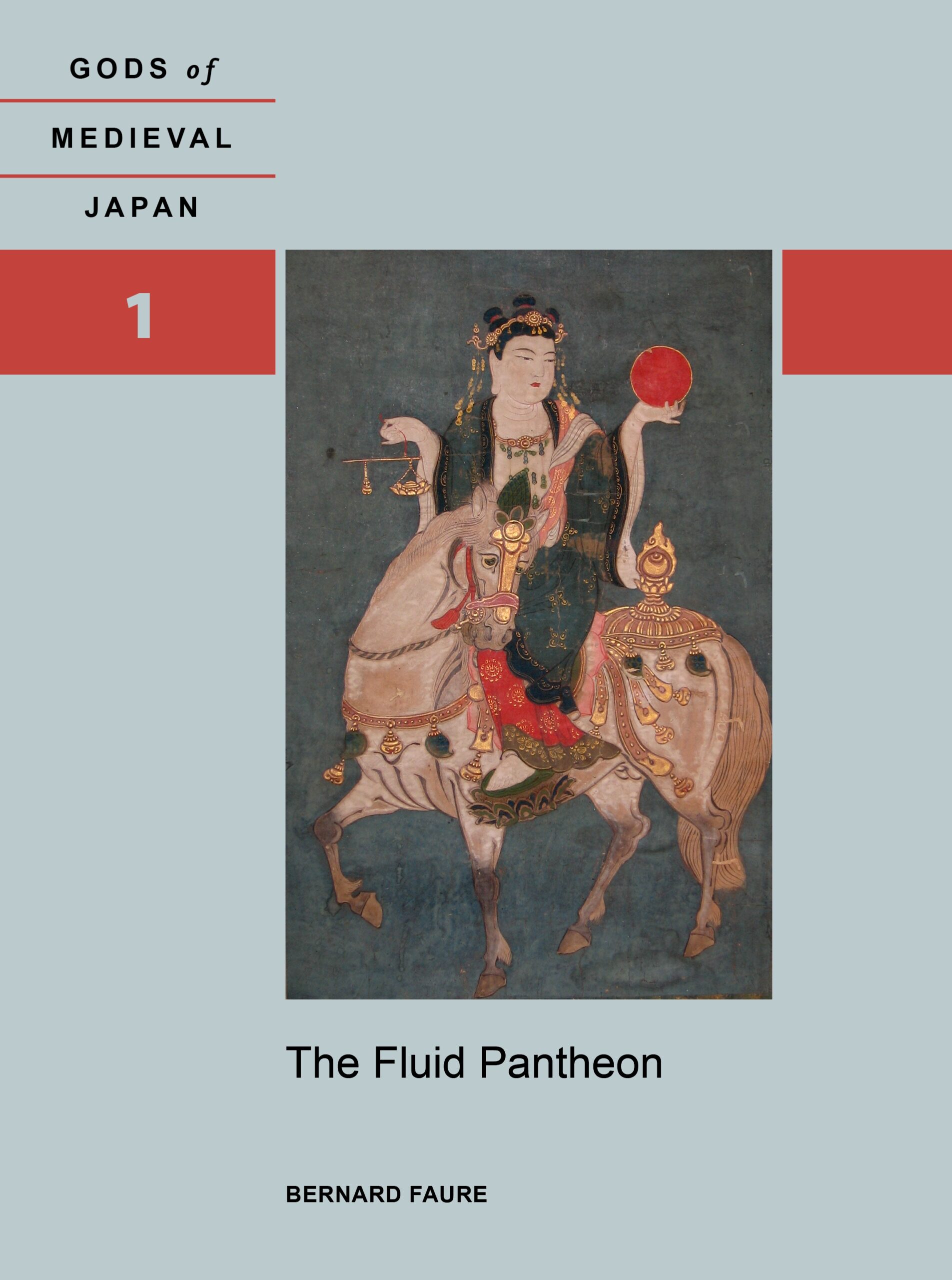The Fluid Pantheon: Gods of Medieval Japan, Volume 1
Additional Information
- About the Book
-
Written by one of the leading scholars of Japanese religion, The Fluid Pantheon is the first installment of a multivolume project that promises to be a milestone in our understanding of the mythico-ritual system of esoteric Buddhism—specifically the nature and roles of deities in the religious world of medieval Japan and beyond. Bernard Faure introduces readers to medieval Japanese religiosity and shows the centrality of the gods in religious discourse and ritual; in doing so he moves away from the usual textual, historical, and sociological approaches that constitute the “method” of current religious studies. The approach considers the gods (including buddhas and demons) as meaningful and powerful interlocutors and not merely as cyphers for social groups or projections of the human mind. Throughout he engages insights drawn from structuralism, post-structuralism, and Actor-network theory to retrieve the “implicit pantheon” (as opposed to the “explicit orthodox pantheon”) of esoteric Japanese Buddhism (Mikkyō).
Through a number of case studies, Faure describes and analyzes the impressive mythological and ritual efflorescence that marked the medieval period, not only in the religious domain, but also in the political, artistic, and literary spheres. He displays vast knowledge of his subject and presents his research—much of it in largely unstudied material—with theoretical sophistication. His arguments and analyses assume the centrality of the iconographic record, and so he has brought together in this volume a rich and rare collection of more than 180 color and black-and-white images. This emphasis on iconography and the ways in which it complements, supplements, or deconstructs textual orthodoxy is critical to a fuller comprehension of a set of medieval Japanese beliefs and practices. It also offers a corrective to the traditional division of the field into religious studies, which typically ignores the images, and art history, which oftentimes overlooks their ritual and religious meaning.
The Fluid Pantheon and its companion volumes should persuade readers that the gods constituted a central part of medieval Japanese religion and that the latter cannot be reduced to a simplistic confrontation, parallelism, or complementarity between some monolithic teachings known as “Buddhism” and “Shinto.” Once these reductionist labels and categories are discarded, a new and fascinating religious landscape begins to unfold.
- About the Author(s)
-
Bernard Faure, Author
Bernard Faure is Emeritus Kao Professor in Japanese Religion at Columbia University and Emeritus George Edwin Burnell Professor of Religious Studies at Stanford University.
- Reviews and Endorsements
-
The first two installments of Bernard Faure’s multivolume Gods of Medieval Japan (Hawaii 2016) represent a milestone in the study of Japanese esoteric Buddhism. . . . most compelling about Faure’s work is his consistent focus on Japanese artworks (hundreds of which are presented here in full color), a move that greatly enhances
our understanding of the dizzying number of deities under discussion in ways that textual analysis alone could never do.
—Lion's Roar- This work is a monumental achievement. It is the most comprehensive study in English of Japanese medieval mythology and sacred pantheons of kami, Buddhas, bodhisattvas, wisdom kings, “bright” deities, animal spirits, embryological gods, gods of obstacles, and demons. . . . These two volumes should not only be on the shelves of any student or scholar of Asian religions, cosmology, or mythology, but also continually picked up and reread for rumination as much as for reference.
—Religious Studies Review - Bernard Faure makes use of his extensive knowledge and mastery of postmodern theories to describe the way in which the gods of Japan appear and function in medieval religion. In doing so, he succeeds in showing the fluid nature of the gods. . . . the significance of Faure’s work lies in that it clarifies the importance of looking into the structural-psychological nature of cults, an aspect all too often overlooked by historians yet strongly needing its own spotlight of enquiry. There is no doubt that his viewpoints will have a profound and enduring impact on the study of Japanese Buddhism. Last but not least, the different chapters are superbly illustrated with high-quality images, some of which are extremely rare and difficult to acquire. This in itself is a remarkable achievement. Bernard Faure is currently preparing two more volumes in which he will undoubtedly share further valuable insights into the intricate web of the various gods of medieval Japan.
—Journal of Japanese Studies
- Supporting Resources
-





